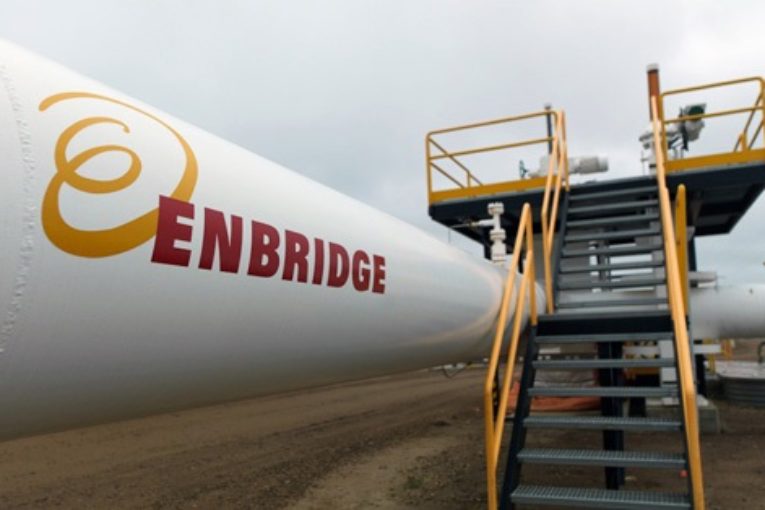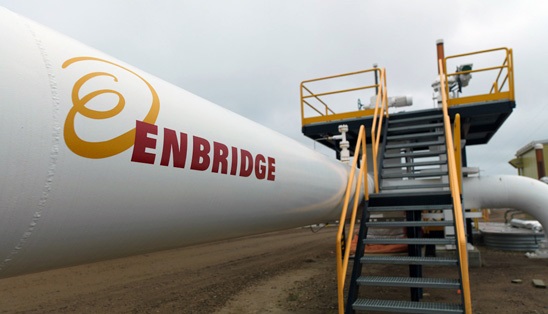
 Commissioners on a Minnesota regulatory board questioned crude oil demand for Enbridge Inc’s Line 3 pipeline on Tuesday, ahead of an expected decision this week on whether work can proceed on a proposed expansion.
Commissioners on a Minnesota regulatory board questioned crude oil demand for Enbridge Inc’s Line 3 pipeline on Tuesday, ahead of an expected decision this week on whether work can proceed on a proposed expansion.
Enbridge wants to replace the aging 1,660-km pipeline that runs from Alberta in Canada to Wisconsin, but it needs approval from the five-member Minnesota Public Utilities Commission, which must decide whether the project is needed, and the route.
Bottlenecks in Alberta have steepened a price discount for its heavy crude this year.
Line 3, which began service in 1968, operates at half its capacity because of age and general deterioration. Its replacement would allow it to return to approved capacity of 760,000 barrels per day.
Commissioner Dan Lipschultz said he felt “frustration”having to rely on forecasts provided by Enbridge based on rising oil production, rather than on refiners’ demand.
Enbridge lawyer Eric Swanson noted that global demand is growing, and that Enbridge apportions demand on Line 3 – transporting less oil than shippers request.
“We think it shows a compelling case that Line 3 plus the expansion will be fully utilized,” he said.
Lipschultz asked Swanson whether it would be reasonable to approve Line 3 for lesser capacity of 500,000 bpd, to which Swanson said ‘no.’
Commissioner Matt Schuerger said data for state refineries suggest little idle capacity, although the state’s largest refiner, Flint Hills Resources, has said Line 3 is badly needed.
“They’re getting oil clearly,” Schuerger said.
“The oil is getting to market somehow,” replied Swanson,representing Enbridge. “The question is what is the most reliable, efficient means of getting it there.”
A third commissioner questioned whether Alberta’s oil sands expansion would continue.
“Tar sands, that industry, is probably the most vulnerable of all,” said commissioner John Tuma. “If there’s a downturn in the oil industry they’re probably the first ones out the door.”
Canada’s oil sands, the source of much of the heavy crude that would flow through a rebuilt Line 3, incurs higher production costs than U.S. shale areas.
The commission began discussions on the best route, even though it has not ruled on the project’s need. Enbridge favors a route that deviates from the existing path in Minnesota, while an administrative law judge recommended in April that the pipeline stay in its current corridor.
The commission resumes meeting on Wednesday morning.
Environmental groups and some indigenous communities oppose the project over concerns about spills and damage to tribal wild rice harvesting areas. Business and labor groups say the project, to cost $2.5 billion in Minnesota, would create jobs and tax revenue.
Mysti Babineau, a member of Red Lake band, wore a baseball cap with a message, “Love water, not oil.”
The potential environmental cost is too great and fossil fuels-based energy is on its way out, she said, comparing it to manufacturing VCRs.
“It’s outdated technology,” she said.
Line 3 supporters wore neon green T-shirts with the message,”We support safe energy transportation.”
One of them, grandmother Cheryl Grover, crocheted a scarf as she listened. Line 3 would pass under her farm near Shevlin, Minnesota, following Enbridge’s preferred route.
“Because public utilities pay so much (tax), we pay less,”she said.
You can read more of the news on source



